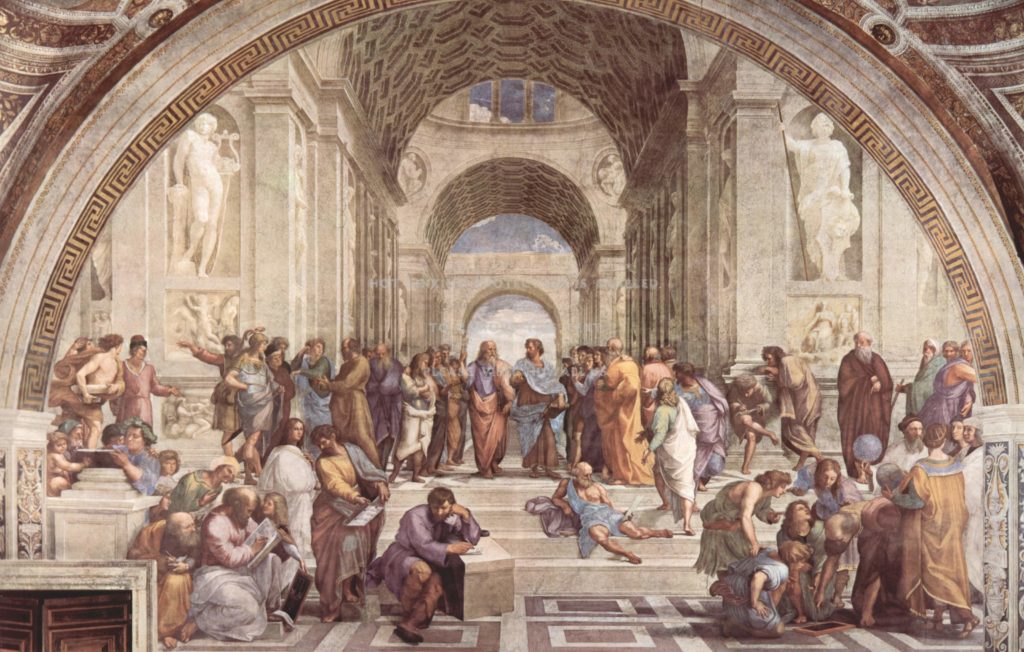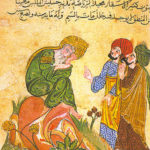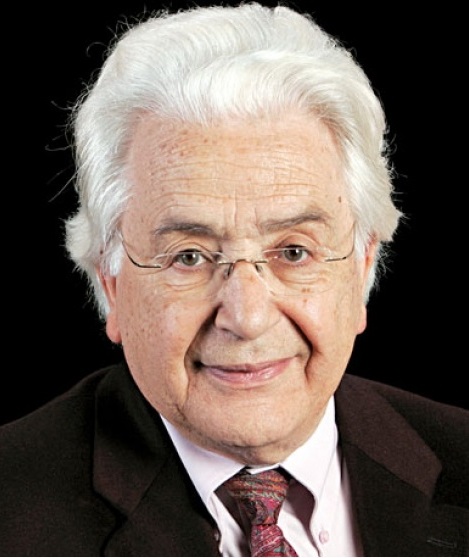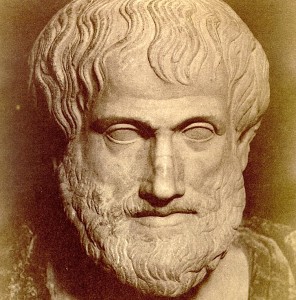
Right up to the present day, speculation for the Muslims has been turned into an effective weapon to be wielded against political opponents. One cannot understand what is taking place today without returning to this distant past since the roots of the problem go back to the first century. Even now no reasonable solution has been found for this since, to date, none has been able to diagnose it in sufficient depth.
BY HASHEM SALEH
THE READER MIGHT well be surprised to read Mohamed Arkoun telling him that the setting down of the Arab Islamic heritage only began in earnest during the Abbasid period – that is, at least a century and a half after the emergence of Islam. This means that truly reliable records from the Umayyad period are few in number and fragmentary – contrary to what we have hitherto believed.
There are two reasons for this: one cultural, the other political. Regarding the cultural reason, one has to keep in mind that Arabs had yet to discover the use of paper, and the process of writing upon palm fronds or camel bones or other suchlike primitive materials was no easy matter. In addition, the Arabic language had yet to perfect its systems to become an effective language of reading. Among other problems it still needed to resolve the problem of diacritical points in order to distinguish between letters similar in shape such as bā’, tā’ and thā’. These problems were not resolved at a stroke but rather went through a series of phases, something that took some, or indeed a lot of, time.
As for the political reasons lying behind the paucity of reliable documents that have come down to us from the Umayyad period, this can be ascribed to the hostility of the Abbasids and their efforts to eradicate every trace of them. To a large extent they succeeded in this following their vanquishing of them, the removal of their regime and the scattering of their remnants over the various provinces. Such was the standard practice of a conqueror over those who had been conquered. History, as is well known, is written by the victors, not the vanquished.
In the light of this we are unable to make any judgement on how much importance to give to the concept of ‘the founding principle’ in doctrinal disputes during the Umayyad period. It is well known that the concept of ‘fundamentalism’ derives from this. This did not originally have the negative connotation it has today. On the contrary, its meaning was a positive, constructive one. Today, however, it has come to mean merely the unthinking imitation of one’s predecessors, a process of isolating oneself in one’s own past and moving in a backwards direction.
‘Fundamentalism’ did not originally have the negative connotation it has today. Now, however, it has come to mean merely the unthinking imitation of one’s predecessors
While it was not until the time of al-Shāfiʽi during the early Abbasid period that the ‘ilm al-usūl (‘the study of the foundational precepts’) found its crystallisation in literature, we may nevertheless agree that the Qur’ān, and the hadith shortly after, imposed themselves upon all Muslims as foundational sources for religious belief and law. They constitute the founding principles of Islam, and are what are now referred to as ‘the Book and the Sunna’. Yet early doctors of law and magistrates occupied themselves equally with the promulgation of fatwas and legal rulings relying for this upon personal opinion and not merely upon the Book and the Sunna. In other words, they were instinctively practising a form of analogical reasoning that was less prescriptive and more liberal than that which subsequently came to be defined by al-Shāfiʽi. He, of course, was the founder or at least one of the major founders of Islamic ‘ilm al-usūl in Islam.
In his studies on the fundamentals of Arab Islamic thought, Arkoun is of the view that the investigation of legal rulings applicable to relations between men, termed ‘transactions’, cannot be separated from an essentially theological investigation into the nature of relations that should obtain between mankind and God. At a time when the scholarship of legislative principles (usūl al-fiqh) was becoming crystallised, another related intellectual discipline of no less importance (indeed one that is possibly of greater importance) was also taking shape: the scholarship on the ‘principles of the faith’ (usūl al-dīn). This took shape gradually through a process of bitter disputation between the various conflicting sects of Islam, beginning from year 40 of the hijra (661 AD), that is, a mere 13 years following the death of the Prophet, and with the initiation of the Umayyad caliphate. These theological disputes essentially revolved around the status of the believer and the sinner, or the ‘believer and the corrupt’ according to the terminology of the day. It focussed also upon the status of the believer and the disbeliever (kāfir). Theological disputations consequently took place during the Umayyad period between the various Islamic sects such as the Qadariyya, the Jabariyya, the Shīʽa, the Khawārij and the Sunnis[1]. These bitter, violent disputes among Muslims of the various schools of thought and sects brought some major theoretical difficulties to the fore for the first time. These are the same problems that subsequently beset Arab Islamic philosophical and theological thought over the third and fourth centuries of the hijra, a long time after the Umayyads.
From that time on, and right up to the present day, speculation for the Muslims consequently turned into an effective weapon to be wielded against political opponents. Consider how al-Zarqāwī and the hard-line Salafists pronounce all other Islamic denominations as ‘infidel’, particularly the Shīʽa in Iraq and beyond.[2] Even Al-Qaradāwī denounces some Islamic sects and denominations as infidel. One cannot understand what is taking place today without returning to this distant past since the roots of the problem go back to the first century. Even now no reasonable solution has been found for this since, to date, none has been able to diagnose it in sufficient depth.
These doctrines are human constructions, not celestial ones
Here is where the methodological brilliance of Arkoun resides: it embraces the entire history of Islam in one fell swoop and illuminates the past by means of the present, and the present by means of the past. This is the meaning of the ‘progressive-regressive methodology’ that he formulated and innovated. At the same time this methodology deconstructs every inherited traditional doctrine by establishing their historicity and removing from them their purported sanctity and ‘divine’ legitimacy. For (contrary to popular conception) these doctrines are human constructions, not celestial ones – ‘human all too human,’ as Nietzsche put it. Nevertheless the accretions of time have covered them over and made the Muslim masses invest belief in their sanctity. In this sense the process of takfīr, from whichever way you look at it, has no religious legitimacy to it but is rather associated with political conditions that may be precisely determined.
For this reason Arkoun places great emphasis upon employing the genealogical method, after the manner of Nietzsche, who ingeniously unearthed the early roots of Christian doctrines and demonstrated their historical and human origins, exposing their claimed sanctity and exemption from history. Similarly the author of A Critique of Islamic Reason insisted upon the employment of archaeological methodology which Michel Foucault had used to reveal the historical nature of the institutions and concepts of modernity itself. This constitutes a sequel to Nietzsche’s genealogical methodology since Foucault, in the end, is merely a student of Nietzsche. This itself is the methodology of the French École des Annales[3] as crystallised by Lucien Febvre, Marc Bloch and Fernand Braudel who spoke of the need to place the problems of the present within a long view of history if we wish to understand them properly. The differences that persist among the major Islamic denominations, in Shi’ism, Sunnism and Ibadism, cannot be understood if we fail to locate them within a very broad timeframe covering virtually the entire history of Islam, or every period subsequent to the death of the Prophet and extending to the present-day.[4]
This is because Islam at the time of the Prophet was neither Sunnī, Shi’ī, Ibādī nor Khārijī, but was simply Islam first and foremost, and not yet split up into sects and denominations. The Muslims were not to divide themselves into conflicting factions until after the death of the founding Prophet, as happens with all major intellectual and ideological movements in history. Just consider, for example, the divisions that took place within Christianity between Catholicism, Orthodoxy and Protestantism. These are similar to the three major divisions that opened up within Islam: the Sunnis, the Shīʽa and the Khawārij.
But we have forgotten to talk about the Muʽtazila which was one of the great Islamic sects until it subsequently became extinct as a result of hostility and suppression from the official ruling Islam that at that period came to be dominated by the Hanbalīs or, if you will, the combined Ashʽarī Hanbalī denomination. Arkoun sees Muʽtazilism as emerging at Basra at the end of the first century AH, that is, during in the Umayyad era. Abbasid propaganda, as is well known, made use of its name and promoted it for the support it gave to the overthrow of the Umayyads and their replacement by the Abbasids. It was in fact adopted as the official state doctrine during the era of Al-Ma’mūn, al-Muʽtasim and al-Wāthiq before al-Mutawakkil subsequently overturned it and the Hanbalīs triumphed. It then suffered a series of adversities until it was entirely erased from Islamic soil, leaving no trace from that time to the present.
As late as 850 AD one can speak of pragmatic jurisprudential solutions
There is no contemporary Muʽtazila in the way that there are Shīʽa or Sunnī or Ibādī sects, but it had a strong force and presence in the past. It is well known that heresiographical works that classified the Muʽtazila as heretical, as indeed all the books that were composed at the time under the aegis of the official authorities, considered Wāsil bin ʽAtā’ (ob. 132 AH/750 AD), to have headed a community proselytising Muʽtazilism, thus disseminating the movement’s ideas over the various Islamic provinces. His message even reached to the distant Maghreb and the Yemen, both areas far removed from Iraq.
These historical considerations allow us to consider the victory of the Abbasids as being merely the victory of just one of the teeming politico-religious parties existing at the time in the Islamic arena. We know that the alliances it contracted and the opposition that it stirred up only added, rather than ameliorated, the fragmentization of the Muslim nation. The early Abbasid caliphs were doubtless attempting to restore unity to the warring believers who had been divided against themselves ever since the Umayyad period, or even directly following the death of the Prophet. But the official Islam they attempted to impose conflicted with other currents far removed from the centre in other cities such as Basra, Kufa and Damascus. These currents began to establish footholds in the capital Baghdad where the potential for intellectual investigation was all the broader and richer.
Arkoun sees that even as late as 236 AH (850 AD) one can speak of a practical, pragmatic standpoint being taken, one that was open to every type of compromise and where realistic jurisprudential solutions were the dominant feature, where there was the exercise of independent reasoning (ijtihād) in the most productive sense of the term, and where cultural symbiosis prevailed. All three of these positive things imposed themselves upon the majority of prominent thinkers in the Abbasid period. In this sense it is justifiably called a ‘golden age’ of Islamic Arab civilisation. We can see that this period covers the eras of the great Abbasid caliphs such as Hārūn al-Rashīd, al-Ma’mūn, al-Muʽtasim and al-Wāthiq, and even the early years of al-Mutawakkil, after which it was soon overturned as we mentioned earlier. This fanatical caliph went on to persecute the Muʽtazila, the philosophers and the generality of intellectuals, so that the victory ultimately went to the Hanbalīs, the hadith scholars and the proponents of unchanging tradition.
Arkoun does not hide his admiration for Ibn al-Muqaffaʽ, one of the early founders of Arabic prose literature. Despite being of Persian origin, he studied the Arabic language and excelled in it just as he excelled in various scientific disciplines and in many languages such as Arabic, Persian, Greek and even Sanskrit. Although put to death in his prime at the age of 36 on trumped up charges of heresy, he left behind him important works, not the least of which was his translation into Arabic from Middle Persian of the book Kalīla wa-Dimna, and his original works Al-Adab al-Kabīr and Al-Adab al-Saghīr,[5] among others. His life and works embody the intellectual ferment that seeks to crystallise the integration of religious doctrine and worldly culture with a way of life where Arab and non-Arabs came together sharing a new set of values, rather than each retiring into their specific past – the Persian past of the mawālī and, for the Arabs, the Arabian past that predated Islam.
The activity of this great thinker with his deep roots in Iranian culture is the strongest indication of the progress that Arabs and non-Arabs made in acknowledging and discovering each other. In the same way it is a pointer to the length of the road ahead. The Arabs at that time were witnessing the expansion of their language and the expansion of Islam among the conquered peoples. The Persians were demonstrating, within the new frameworks that they had accepted, the wealth of their Iranian cultural heritage that preceded Islam. In this way a fertile, productive interaction took place between the two parties. The execution of Ibn al-Muqaffaʽ was a harbinger of the defeat of the intellect and of rationality in Islam.
Yet for all the importance of the ancient Iranian cultural heritage in the formation of Islamic Arab civilisation, the role played by the heritage of the Greeks in cultural cross-fertilisation was greater still. Here we have to study in turn how the process of translation of the classical Greek philosophers (Plato and Aristotle in particular) into Arabic took place. After which we should study the process of translation of the Hellenistic philosophy as represented by the Alexandrine school in all its Platonic, Aristotelian and Plotinan branches, in addition to the Stoics, Epicureans, Pythagoreans and esoteric Hermetics.
We should also add to this tallythe influence of the Church Fathers, and in particular the centres of Syriac learning in the Middle Eastern region such as Edessa and Harran. We should also mention the role played by the Jundishapur centre in Iran in the translation and transmission of knowledge from one language to another.
The fact is that the process of translation was a very long one and lasted for two centuries or more – that is from the second until the middle of the fourth century AH. During that period the Arab scientific and philosophical vocabulary first made its appearance in history. Prior to that time the Arabic language was the language of poetry, prose, sermonising, religion, religious law, hadith and of tales of the ancient Arabs and so on. But it was not a language of science and philosophy. It only became such as a result of the extensive translation initiative enthusiastically promoted by Al-Ma’mūn. Herein lies the difference between an enlightened despot such as Al-Ma’mūn and obscurantist, isolationist despots such as Al-Mutawakkil, Al-Qādir and others.
The execution of Ibn al-Muqaffaʽ was a harbinger of the defeat of the intellect and of rationality in Islam
Whatever the case, it behoves us to investigate thoroughly the environment in Baghdad at the first half of the third century AH (ninth century AD) if we wish to understand the cause of the enthusiasm for knowledge, truth, light and philosophy that was evidenced by the political leadership and the Arab Muslim intelligentsia. That period represents one of the most beautiful periods in Arab history, one which interacted with all foreign intellectual currents. They did not consider this to be an intellectual attack in the way that the fundamentalist Salafist leadership considers it today! On the contrary, they hastened to translate the majority of the works of Plato, Aristotle and Galen into Arabic. They even translated the fundamental works of commentators such as Porphyrius, Simplicius and Proclius. There is no doubt that it was the will of a great enlightened sovereign like Al-Ma’mūn that constituted the prime mover in all this creative cultural interaction.

Suggested Reading
We know that he ruled the Arab Islamic Empire for a period of 20 years between 198-218 AH (813-833 AD), and that the foundation of the House of Wisdom may be considered to be one of the most important political decisions ever made in the history of the Arabs and Muslims. We say this, well aware of the importance of the role played at all times by centres of research and translation in the resurgence of nations and peoples. But the will of this great Caliph was supported by an entire social class and was not merely an isolated personal predilection. We say this despite the undoubted importance of a leader or a monarch in inaugurating great movements of rebirth. We refer to the bourgeois mercantile social class existing at the time in Baghdad and other Islamic cities, for it is these who supported the rational thinking powering philosophy and the work of the Muʽtazila, as well as the liberating currents of poetry and literature. These are responsible for the appearance of libraries in Baghdad and elsewhere, and who generously supported littérateurs and writers.
All this led to the human intellect’s status being raised and championed as a basic tool for discovery and knowledge, alongside Revelation and religion. One should note here Arab scientific activity in the strictest sense of the word – that is the physical, mathematical and astronomical sciences and suchlike. It is known that these flourished between the third and fifth centuries AH, during the Golden Age.
[1] For these terms see Glossary.
[2] Fortunately, the new Tunisian constitution has outlawed takfīr (the declaration of others as ‘infidel’) and given recognition to freedom of thought and conscience. This is a first in the Arab world. The leaders of the Tunisian fundamentalist movement Al-Nahda have only grudgingly accepted this, and only following some very bitter arguments in the Tunisian parliament.
[3] On this, see Almuslih article: Orientalism and the Historicization of the Islamic Heritage (Ed.)
[4] In order to solve the problems amongst Muslims on the one hand and the ‘People of the Book’ (the Jews and Christians) on the other hand, one has to first return to the era itself of the Prophet. We should historicise every Qur’ānic verse that speaks of attacking, or declaring others as ‘infidel’, so that they become transformed into relative and not absolute statements, connected with the warlike circumstances of their time and therefore not to be applied to Jews and Christians today. Herein lies the arduous mission entrusted to Arab intellectuals. What is greatly to be regretted is that we have recently lost two great pillars of Islamic enlightenment – Lafif Lakhdar and Shaker al-Nabulsi. These two were able to confront takfirist movements courageously and powerfully.
[5] The now lost Middle Persian Karīrak ud Damanak by a Persian physician attached to the Sasanian court in the 6th century was based ultimately upon the 3c BC Sanskrit work Pañcatantra (‘Five Principles or Techniques’) a collection of animal fables in verse and prose. Al-Adab al-Kabīr details the legacy of the Sasanian ancestors, includes a ‘mirror for princes’ with advice for the perfect ruler, advice for survival at court and the offices of administration (Ed.)
Main image: a fresco by the Italian Renaissance artist Raphael. It was painted between 1509 and 1511 for the Apostolic Palace, Vatican City. Figures in the painting include Zoroaster, Plato, Aristotle, Euclid, Ptolemy, Pythagors and Ibn Rushd (Averroes).




